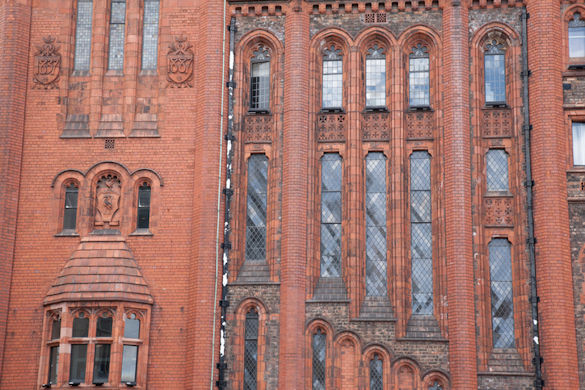
Each year, the University publishes information about its finances, which includes audited financial statements as well as information for students.
This information is available to all students and staff and can be accessed on our webpages.
Our total income in 2021/22 was £614.9 million. Our total expenditure of £756.1 million in 2021/22 was £141.2 million higher than our total income.
This difference between our income and expenditure was expected and is due to an increase in our Universities Superannuation Scheme (USS) pension provision along with additional investment as we emerge from the pandemic and begin to invest in our strategic priorities.
USS pension provision increase
The pension provision relates to our obligation to fund the University’s share of a past deficit on USS and has impacted all universities who are members of the scheme.
The provision has increased by £138 million to £214.1 million resulting in a planned for gap, or operating deficit, between our income and expenditure for the 2021/22 financial year.
The pension adjustment is a one-off non-cash charge; however, it does reflect the continued high cost of the USS pension and represent amounts due over the next sixteen years based on the latest valuation.
Our underlying financial performance is sound with an underlying operating surplus of £11.8 million.
The University of Liverpool is a ‘not for profit’ organisation which means that any annual operating surplus is reinvested in the University.
You can find out more about why generating surpluses in most years is an essential part of ensuring the financial health of our institution on our dedicated webpages.
Preparing for the future
Capital investments are an important part of preparing the University for the future. These investments, which are not included in the expenditure for the year quoted above, total £48.8 million for 2021/22, and are funded mainly from surpluses made in previous years. This year the University has invested:
- £12.9 million in software and capital equipment
- £5.8 million in our world class Arts and Humanities Centre
- £2.5 million on the Malawi Welcome Trust Clinical Research Programme CREATOR Project
- £2.0 million on the utilisation of the William Henry Duncan Building
- £1.9 million on the refurbishment and extension of the School of Environmental Sciences
- £0.9 million on the refurbishment and extension of the School of Architecture
- £16.7 million in infrastructure programmes of work
- £6.1 million in additional smaller projects
Income
Our income comes from a variety of sources, all of which support our work including government grants for teaching and research which subsidise the cost of more expensive programmes, student fees, donations and income generated through commercial activities.
Student fees, in total, made up 50% of our income.
You can view a breakdown of income sources here.
Expenditure
We used our income in 2021/22 to support our activity, from running academic departments to providing support services for students and maintaining our estate, premises and facilities.
The cost of academic departments and academic support services represents more than half of the University’s total expenditure. The remaining expenditure is essential in supporting the quality of the student experience.
You can view a breakdown of expenditure here.
How tuition fees are spent
Each year we aim to demonstrate how the £9,250 tuition fee is spent to help students understand what their fees support beyond their academic tutoring. The areas highlighted in the report are also supported by income from other sources, but for the purposes of demonstrating specifically how student tuition fees are spent we have excluded activity funded by other income including government grants for teaching and research, research grants and contracts, and income from residences, catering and conferences. We have also excluded from staff costs a £138 million one-off non-cash charge in relation to our USS pension provision.
You can view a breakdown of how the £9,250 student tuition fee is spent here.